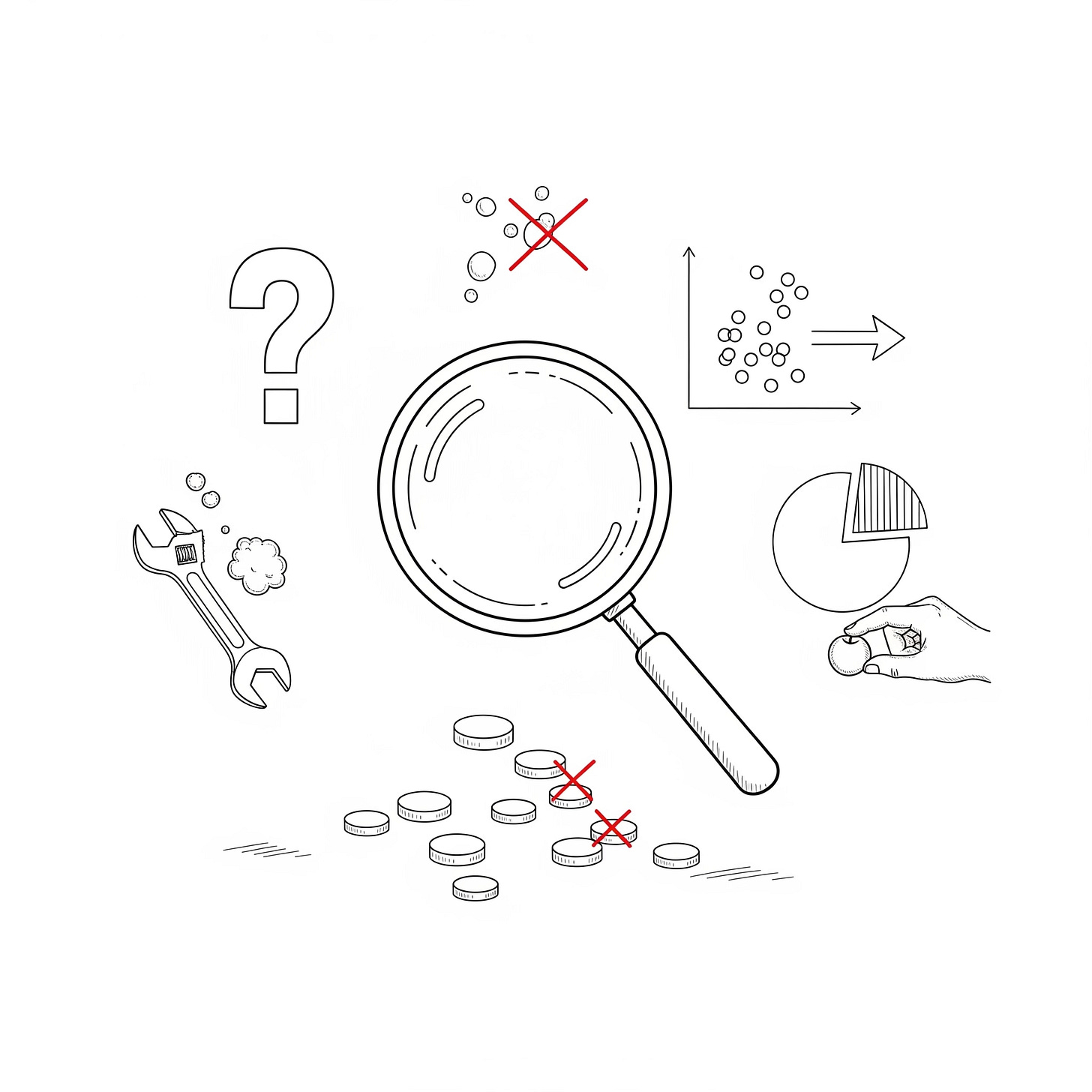Common Mistakes to Avoid During Data Analysis
Beyond the Numbers: A Guide to Avoiding Common Pitfalls in Data Analysis
Data analysis is a powerful tool, but it's also a process filled with potential pitfalls that can lead to flawed conclusions and misguided decisions. The old adage, "garbage in, garbage out," is especially true here. Even with the right data, an analyst can make critical mistakes that undermine the entire project. Common mistakes in data analysis often stem from a lack of a clear plan, a failure to properly prepare the data, and an overreliance on a single metric or perspective. Recognizing these mistakes is the first step toward becoming a more effective and trustworthy analyst.
Many people, from business leaders to junior analysts, fall into these traps. They might jump into the data without a clear question, use a flawed dataset, or confuse correlation with causation. These errors can have serious consequences, leading to wasted resources, incorrect business strategies, and a loss of confidence in data-driven insights. For anyone who works with data, understanding and actively avoiding these common pitfalls is essential. This guide will walk you through the most frequent mistakes and provide a clear framework for a more robust and reliable analysis.
Why Acknowledging Mistakes Is Essential for Good Analysis 🤔
Recognizing and avoiding common mistakes is crucial because it helps you:
Ensure Accuracy: Avoid incorrect conclusions that can lead to bad business decisions.
Build Trust: Deliver reliable insights that build confidence in your work and your team.
Improve Efficiency: Prevent wasted time on flawed data or analyses that lead nowhere.
Promote Objectivity: Overcome personal biases and assumptions to let the data tell its true story.
Common Mistakes and How to Avoid Them 🚧
1. Starting Without a Clear Goal 🎯
The Mistake: Jumping into a dataset without a specific question or business problem to solve. This often results in a "data dump" where you simply summarize numbers without providing any actionable insights.
How to Avoid It: Before you open a spreadsheet or write a single line of code, clearly define your objective. Ask yourself: "What specific question am I trying to answer?" or "What business problem am I trying to solve?" This will give your analysis a purpose and a clear direction.
2. Neglecting Data Quality and Cleaning 🧹
The Mistake: Working with raw, messy, or incomplete data. Issues like missing values, duplicates, and inconsistent formats can completely skew your analysis and lead to inaccurate conclusions.
How to Avoid It: Always start with data cleaning. This is often the most time-consuming part of the process, but it's the most critical. Use a systematic approach to check for and handle missing data, remove duplicates, and standardize formats. A clean dataset is the foundation of a reliable analysis.
3. Confusing Correlation with Causation 🤝
The Mistake: Assuming that because two variables are related, one must be causing the other. For example, you might see that ice cream sales and shark attacks increase at the same time and conclude that ice cream causes shark attacks.
How to Avoid It: Always look for a confounding variable. In the ice cream example, the confounding variable is summer. Both ice cream sales and shark attacks are higher in the summer. A true analyst will always ask "why?" and look for a logical reason for the relationship, rather than jumping to a conclusion.
4. Ignoring Outliers and Skewed Data 📊
The Mistake: Overlooking data points that are significantly different from the rest. Outliers can heavily influence your analysis, especially when you are using averages.
How to Avoid It: Use a combination of metrics and visualizations. Instead of relying only on the average (mean), also look at the median and mode. Use visualizations like box plots and scatter plots to see how your data is distributed and to easily spot outliers. When you find an outlier, investigate it—it could be a simple data entry error or a significant, impactful event.
5. Cherry-Picking Data 🍒
The Mistake: Intentionally selecting data that supports your pre-existing hypothesis while ignoring data that contradicts it. This is a form of confirmation bias that leads to a dishonest and unethical analysis.
How to Avoid It: Approach your data with a neutral, objective mindset. Be willing to let the data prove you wrong. Always present the complete picture, even if it's not the story you expected to tell.
6. Using the Wrong Visualization 🎨
The Mistake: Choosing a chart or graph that doesn't effectively communicate your findings. For example, using a pie chart to compare too many categories makes it impossible to read.
How to Avoid It: Understand the purpose of each chart type. Use bar charts for comparisons, line graphs for trends over time, and scatter plots for relationships between variables. Your visualization should tell a clear and simple story that is easy for your audience to understand at a glance.
By proactively addressing these common mistakes, you can elevate your data analysis from a simple numbers game to a strategic process that delivers accurate, meaningful, and actionable insights.
Is your business making decisions based on flawed data? Visit FunctioningMedia.com for expert data analysis and business intelligence services that help you avoid these common pitfalls and unlock the true value of your data. Let's turn your data into a powerful asset.
#DataAnalysis #DataScience #DataAnalytics #MistakesToAvoid #DataQuality #CorrelationVsCausation #DataVisualization #BusinessIntelligence #DataTips #FunctioningMedia



